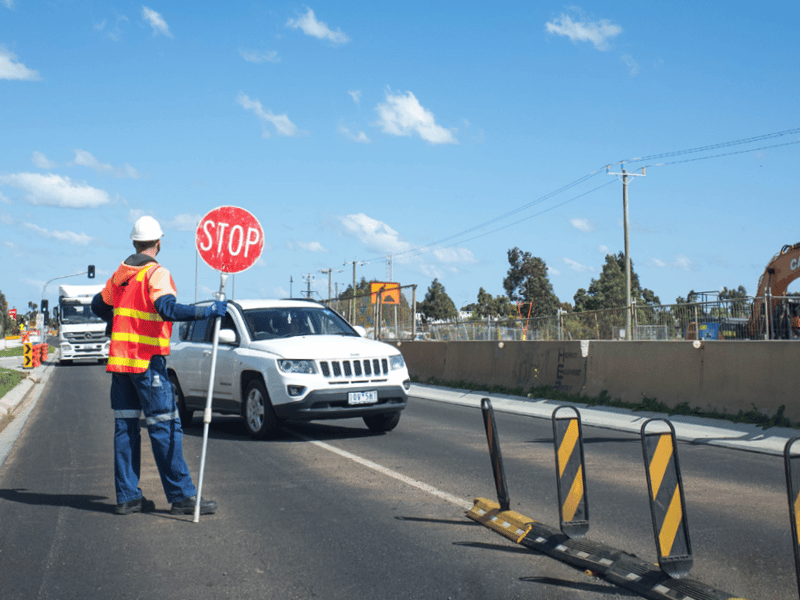

While the combined power of engineering, enforcement and education has been used to improve many sectors, how is Australia applying them to road safety?
As a nation, we’re famous for our high quality road trip routes on offer. Every year, thousands of domestic and international tourists hit the road to explore the many corners of Australia’s diverse collection of landscapes.
However, there is a dark underbelly to this pursuit, and to our nation’s reliance on car based transport. As of March 2022, Australia had a road fatality rate of 4.4 people per 100,000. Although this figure is significantly better than many other developed nations, it’s an alarming 2.4% increase when compared to the same period twelve months earlier.
In an effort to combat these shocking statistics, individuals, local, state, and federal governments are all thinking outside of the box for methods to improve road safety in Australia. While the Federal Government has allocated funding for a range of road safety infrastructure and non-infrastructure initiatives such as the Road Safety Innovation Fund, the Queensland Department of Transport and Main Roads (TMR) have taken a different approach, and are applying the principles of the three E’s to a real world setting.
The Department of Transport and Main Roads, known often as TMR, is a department of the Queensland Government. Initially formed in April 2009, the department came to fruition by merging Queensland Transport and the Department of Main Roads into one mega portfolio.
TMR is responsible for the planning, management and delivery of Queensland’s integrated transport environment to achieve sustainable transport solutions for road, rail, air and sea. According to their mission statement, TMR aims to improve quality of life for Queenslanders, the state’s economic well being, in addition to maintaining a sustainable environment.
As the body responsible for maintaining Queensland’s extensive road network, ensuring the safety of contractors, road users and traffic controllers at roadworks sites is of major importance to road authorities, as part of their duty of care to employees and the broader community, but minimising the impacts of roadworks is another challenge entirely.
While current data relating specifically to construction industry road workers is not freely available, historical information suggests that each year around one hundred traffic controllers are injured and require medical treatment or time off work. In addition, studies have also shown that crash rates increase in locations where roadworks are being undertaken.
In an effort to increase safety and reduce frustration levels amongst road users, TMR has embraced the framework provided by the three E’s – engineering, enforcement and education – to deliver improved operations at roadworks sites.
Engineering – Aimed at improving the existing transportation infrastructure and factoring in safety when designing new transportation infrastructure, engineering measures for road safety include identifying and developing solutions for known road safety problem areas, reviewing standards for road development and moving towards a safety conscious road form, customised for local conditions, and conducting road safety audits.
Enforcement – Sometimes the message of road safety doesn’t get through to everyone, so enforcement is often the only effective way to deter unsafe driving practices. While staffing levels of the police force don’t permit an officer to monitor every single location where there’s roadworks, they do often patrol these areas to keep an eye on driver behaviour. In addition, speed cameras and other technologies are now being deployed to enforce speed limits.
Education – Driving to conditions in roadworks can be improved through increased signage, particularly when drivers are given ample warning that they are approaching a roadworks zone. In addition, investing in items such as rumble strips also alert the driver that they are approaching a change in conditions, to slow down, and to pay attention to their surroundings. Campaigns on the dangers of speeding through roadworks have also proved to be effective.
In Australia, road safety is an extremely serious business – and it should be. Although getting behind the wheel of a car is something that many of us do multiple times per day, the likelihood of an accident is sadly on the rise. If you’re on the hunt for products that will improve road safety for your home, workplace or business, it’s important to partner with the experts – but where do you find them?
At Speed Humps Australia, we’ve spent more than 20 years focusing on one thing: to provide one style of product, and to do it exceptionally well. We have worked tirelessly to develop specifications that do not fade or deteriorate, are easy to install, and are made from high-quality, recycled rubber for minimal environmental impact.
With just a handful of our clients around the nation including KFC, McDonalds, Taco Bell, Westfield, Shell and numerous Local Governments, our rumble bars, speed humps and wheel stops have been designed in house to truly go the distance.
As our design and production is all handled in house and supplied Australia wide, get in touch with us today to request a quote or discuss how we can help with providing a tailored solution to your unique project requirements.



For 10 years, our focus has been on one thing: to provide one style of product and to do it well.
Our wheel stops, speed humps and rumble bars meet Australian Standards, don’t fade, and we’ve never needed to replace one.

For 10 years, our focus has been on one thing: to provide one style of product and to do it well.
Our wheel stops, speed humps and rumble bars meet Australian Standards, don’t fade, and we’ve never needed to replace one.